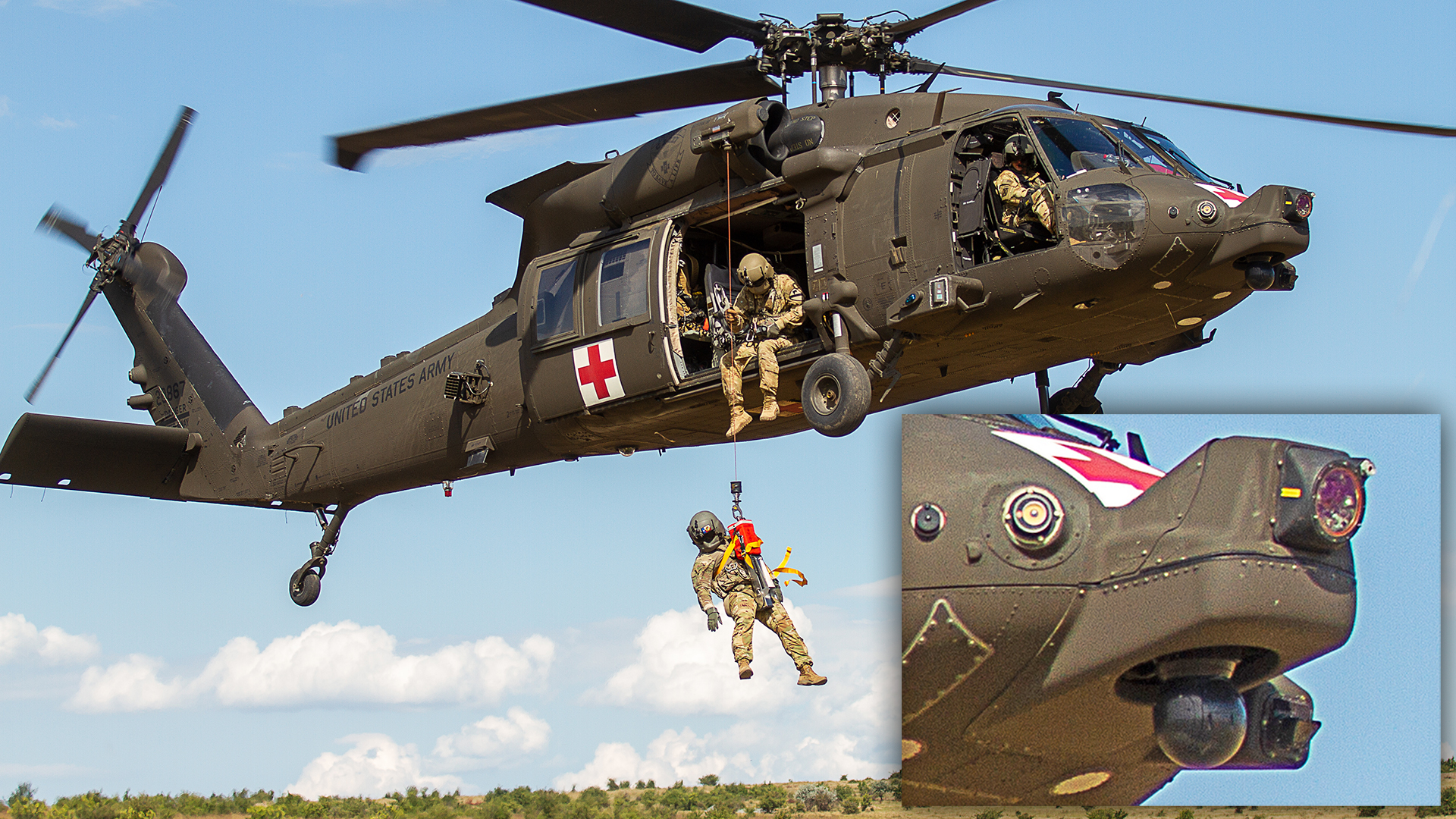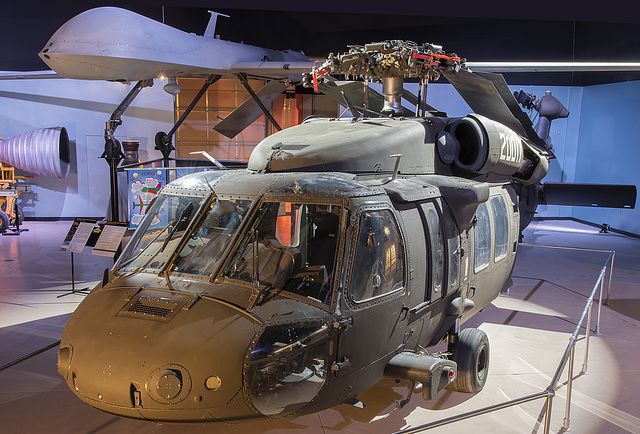UH 60 Black Hawk: A Close Look at Its Engineering, Performance, and Tactical Uses
UH 60 Black Hawk: A Close Look at Its Engineering, Performance, and Tactical Uses
Blog Article
Exploring the History and Advancement of the UH 60 Helicopter

Origins of the UH-60
The origins of the UH-60 helicopter can be mapped back to the late 1960s, a duration noted by the demand for a versatile energy airplane that could adjust to the progressing demands of modern warfare. The U.S. Army recognized the requirement for a replacement for the older UH-1 Iroquois, which was ending up being progressively poor for the intricacies of modern fight circumstances. In 1967, the Military initiated the Utility Tactical Transportation Airplane System (UTTAS) program, which sought to develop a multi-role helicopter efficient in various goals, consisting of army transport, medical emptying, and logistical support.
The UH-60 Black Hawk was presented, showcasing ingenious layout aspects and advanced technology that established it apart from its predecessors. The UH-60 promptly got acknowledgment for its durable performance, dependability, and adaptability, paving the means for its comprehensive usage in armed forces procedures and strengthening its standing as a foundation of United state Army aeronautics.
Secret Layout Attributes
Ingenious style features of the UH-60 Black Hawk significantly add to its functional performance. One of one of the most significant facets is its twin-engine configuration, which improves reliability and offers a greater power-to-weight ratio, enabling the helicopter to carry out under various problems. The airplane's four-blade primary rotor system uses boosted lift and maneuverability, important for tactical goals.

Furthermore, the cockpit is made for ideal exposure and functional designs, featuring sophisticated avionics that improve pilot operations. The modular design of the UH-60 permits for easy upkeep and adaptability, making it suitable for various objective accounts, from troop transportation to medevac procedures. These key layout functions ensure that the UH-60 Black Hawk stays a flexible and dependable property in military aeronautics, efficient in meeting the demands of contemporary war.
Technological Improvements
Current technical innovations in the UH-60 Black Hawk have actually significantly improved its functional abilities and versatility. The combination of innovative avionics, such as electronic trip control systems and enhanced situational understanding display screens, permits pilots to run with increased accuracy and performance. These systems promote improved navigation, communication, and information sharing, making it possible for the helicopter to work successfully in diverse environments.
Additionally, the introduction of composite materials has minimized the total weight of the airplane while keeping structural stability. This decrease boosts gas performance and prolongs functional array. The unification of innovative blades innovation, including making use of four-blade, totally expressed blades systems, has actually boosted lift efficiency and ability to move, permitting for better handling in different flight conditions.

Furthermore, developments in propulsion systems, such as the T700-GE-701D engines, have raised power result and integrity - uh 60. These engines add to premium performance in high-altitude and hot-weather problems
Last but not least, the assimilation of self-defense systems and boosted sensing unit plans improves the Black Hawk's survivability and mission view website performance. Collectively, these technological renovations make certain that the UH-60 Black Hawk stays an important asset in contemporary aviation, qualified of adjusting to the evolving demands of army and humanitarian missions.
Duty in Armed Force Operations
As the foundation of U.S. Army aviation, the UH-60 helicopter plays a vital role in different military operations, functioning as a flexible system for battle support, transportation, and medevac goals - uh 60. Its design includes the ability to operate in varied atmospheres, making it crucial for troop activity and logistical assistance in both unconventional and traditional warfare

In clinical evacuation scenarios, the UH-60 has actually proven indispensable, substantially decreasing the time to move wounded soldiers from the field of battle to clinical centers. Its advanced avionics and evening vision capabilities further make sure objective success under challenging problems. Overall, the UH-60 helicopter remains a vital property, continuously adjusting to satisfy the progressing demands of army operations and boosting the efficiency of U.S. pressures worldwide.
Future of the UH-60
Looking ahead, the future of the UH-60 helicopter entails considerable advancements in modern technology and capacities developed to boost its operational effectiveness. As army procedures develop, the UH-60 is expected to integrate sophisticated innovations, consisting of improved avionics, improved weapons systems, and progressed communication tools. These improvements will permit for greater situational awareness and objective flexibility, ensuring that the UH-60 remains an essential asset on the field of battle.
One notable advancement is the assimilation of fly-by-wire systems, which will boost trip control precision and minimize pilot work. In addition, initiatives to upgrade the airframe and engines aim to raise rate, variety, and haul capacity, consequently increasing the helicopter's operational scope (uh 60).
The future likewise holds pledge for boosted interoperability with unmanned airborne systems (UAS), making it possible for collaborated objectives that utilize both manned and unmanned capabilities. Additionally, the incorporation of synthetic knowledge and artificial intelligence might enhance flight characteristics and maintenance processes, resulting in reduced functional prices.
Verdict
The UH-60 Black Hawk helicopter stands for a substantial accomplishment in military air travel, developing from the U.S. Army's first demands for a functional utility aircraft. Its cutting-edge style attributes and continual their explanation technical improvements have guaranteed its significance in different armed forces operations over the years. As the demands of modern-day war adjustment, the future of the UH-60 will likely include further improvements and adaptations, reinforcing its status as an essential possession for militaries worldwide.
The UH-60 Black Hawk helicopter stands for a considerable turning point in army air travel, emerging from the United state Army's mission for an extra reliable and flexible energy aircraft in the late 20th century.The beginnings of the UH-60 helicopter can be traced back to the late 1960s, a period noted by the requirement for a versatile energy aircraft that might adjust to the evolving demands of modern-day war. Generally, the UH-60 helicopter continues to be an important property, continuously adjusting to fulfill the advancing demands of armed forces procedures and enhancing the performance of U.S. pressures worldwide.
Looking ahead, the future of the UH-60 helicopter includes substantial developments in technology and abilities created to boost its operational efficiency.The UH-60 Black Hawk helicopter stands for a significant accomplishment in army aeronautics, developing from the United state Military's initial demands for a flexible energy aircraft.
Report this page